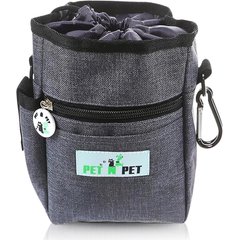What Dog Growling Means and What To Do
Mary Swift/iStock / Getty Images Plus via Getty Images
Growling is part of normal canine communication. People usually think of a dog’s growl as a warning or as a sign of defense. And while growling often means that a dog needs space or is uncomfortable, growling is a complex vocalization that also occurs in other situations.
It’s important to understand why your dog is growling, how you can prevent them from escalating their behavior, and when to intervene.
Key Takeaways
- Growling is a normal part of how dogs communicate.
- Dogs growl for many different reasons, from play to resource guarding.
- Never punish your dog for growling—this can make them more anxious and fearful.
- Redirecting your dog to perform more desirable behaviors is the best way to stop inappropriate growling.
Why Do Dogs Growl?
Depending on the situation, dogs may growl when they are:
-
Playing
-
Greeting another dog or person
-
Verbally reprimanded or physically corrected
-
Interacting with another dog or person while they are lying down in a favorite spot
-
Approached by another dog or person while they have a favorite toy or high-value food item
What Does It Mean When a Dog Growls?
Because dog growling happens in so many different situations, the behavior can have multiple meanings.
Play Growling
A dog might growl while playing with you or other dogs. The growling, in this case, is part of normal playful behavior.
When a dog growls playfully, they have loose body language and soft facial expression, such as a tail held in neutral position and soft ears moved slightly to the side. Both puppies and adult dogs may growl during play.
Growling During Greeting
Sometimes, growling occurs during greeting other dogs face-to-face.
The growl may happen before the other dog comes closer. This may be accompanied by stiff body language, a hard stare, and ears pointed forward or held to the side. This is a clear message that the growling dog does not want the second dog to come any closer.
Other times, growling may occur after the face-to-face greeting ritual, especially if one dog is taking a long time sniffing the other dog’s face. This means that the growling dog is uncomfortable and wants the other to move back.
Growling When Reprimanded or Corrected
Dogs growl when they are yelled at, hit, choked, sprayed with a water bottle, or shocked.
Punishment techniques increase a dog’s fear and anxiety. While these methods may temporarily stop the bad behavior, they do not teach the dog to not repeat it.
Instead, yelling at or being physical with your dog damages the human-animal bond, teaches the dog to not trust humans, and can even increase the dog’s aggression toward those giving the punishment.
Always use positive reinforcement methods to reward desirable behaviors instead of punishing your dog for unwanted behaviors.
Growling When Someone Approaches While They’re in a Favorite Spot
When approached while lying down, a dog may growl, lower their head, avoid direct eye contact, and pull their ears back. This is a clear indication to the other party that the dog does not want to interact or is worried that they may be displaced from their comfortable location.
Growling When They Have a Favorite Toy or Treat
When approached, the dog growls and makes direct eye contact, bares their teeth, and has the front half of their body hunched over the preferred object.
This is a case of resource guarding in dogs. When a dog shows this behavior, it means they are uncomfortable with how close the other party is and worried their favorite item will be taken away.
What To Do When a Dog’s Growling
When your dog growls, acknowledge the growl and redirect your dog to perform more desirable behaviors.
For example, if you’re on a walk and your dog growls at someone heading in their direction, interrupt the behavior using a neutral noise, such as a quick whistle, finger snap, or light clap. You do not want to use a loud, startling noise—just one loud enough to get your dog’s attention.
Next, as the stranger walks by, have your dog focus their attention on you by asking them to perform a command (like “look” or “touch”). When your dog performs the behavior, offer a high-value treat and praise.
By doing this, you’re teaching your dog to focus on you when they feel worried or uncomfortable. You’re also working on counterconditioning to change their negative emotional response to strangers.
If your dog has a habit of growling at strangers, carry a treat pouch on every outing. Every time you see a stranger heading your way, immediately give your dog a treat before they growl. Ask them to look at you when you anticipate a growl. This teaches an alternate behavior: “I look at my parent when I see strangers.”
You want your dog to check in with you and not escalate their behavior when they are uncomfortable. If your dog is not interested in high-value treats, offer plenty of praise and petting or playing with a preferred toy. Find the items that motivate your dog and use them as rewards.
Training your dog provides a clear way to communicate with them. Training, as well as providing appropriate mental stimulation and physical outlets, also reinforces the desirable behaviors you want to see in your dog and weeds out the undesirable ones.
What Not To Do
Do not yell at, use a shock collar, or hit your dog when they growl.
Remember that a growl, just like a bark, is a normal part of a dog’s vocal communication. When you tell your growling dog to be quiet, you are only correcting what you perceive to be a problem in that moment and not understanding why your dog is growling.
When you physically punish your dog for growling, it may lead to further aggression with your dog baring their teeth, lunging, snapping, or even biting. The punishment may also reinforce your dog’s underlying fear or anxiety.
By punishing, you also may be confirming to your dog that they should be worried or fearful when strangers approach, because you, the person they trust the most, become unpredictable and mean when strangers are present. It reinforces their feeling that the presence of strangers is a negative experience.
While growling often means that a dog needs space or is uncomfortable, growling is a complex vocalization that also occurs in other situations.
If you need some guidance on how to work with your dog, find a trainer who uses positive reinforcement training, such as a Fear Free trainer, KPA-certified trainers, or CTC-certified trainers.
Do not use a trainer who endorses punitive or balanced training techniques. Trainers should not make your dog feel uncomfortable or scared. Instead, they should help your dog gain confidence and be excited about learning from you and listening to you.
If your dog continues to growl, refuses to take rewards, appears fearful and anxious, or escalates their behavior to barking, lunging, and biting, take them to a veterinarian for an exam. Sometimes medical conditions can cause a dog to growl and not want to interact with their environment.
If your dog receives a clean bill of health from a vet, see a board-certified animal behavior professional such as a veterinary behaviorist (DACVM) or an applied animal behaviorist (CAAB).
Dog Growling FAQs
Why has my friendly dog started growling at other dogs?
Growling is a normal behavior in dogs. But if you’ve noticed a sudden change in your dog’s behavior, it’s important to take them to a veterinarian for an exam. Pain and other medical conditions contribute heavily to sudden behavior changes.
Once pain is ruled out, work with a certified trainer.
Why does my dog growl at me?
If your dog is new to you, give them three days to decompress in the home. It takes most dogs three months before they have become completely comfortable in a new environment.
If the growling is a new behavior or doesn’t stop, take your dog to the vet to rule out medical conditions and work with a certified behavior.
Why is my dog growling at nothing?
This could be a sign of pain, and medical conditions must be ruled out by a veterinarian.


